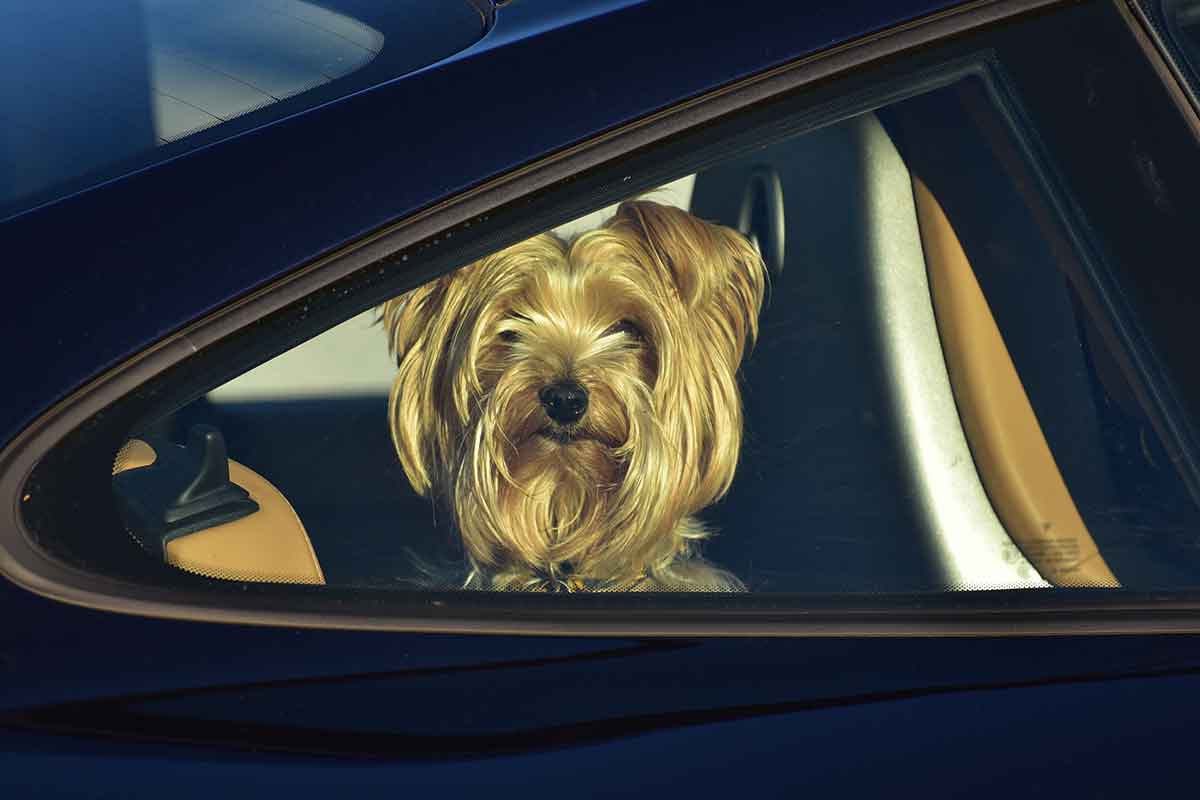You’ve brought home your new car, loaded it with the things you normally carry, and you’re ready to go for a drive with your dog riding shotgun (safely secured, of course). But when you invite him to jump in, he puts on the brakes.
Your faithful canine companion knew your old car. This car is different, and he might not be ready to trust it just yet. Don’t despair; your dog can learn to enjoy this new car and he’ll go for rides with you. But maybe not today.
Let Your Dog Investigate
Park your car in the garage or another safe place, and let your dog accompany you as you check out your new car. Talk to him as you move around the car and climb in and out. “Hey, Buddy, look at this.”
In most cases, his natural curiosity will bring him closer. Praise him if that happens, but if he’s hesitant, don’t force him. Let him investigate at his own speed.
Bring Out The Treats
After your dog has had a chance to look at and sniff the new car, give him a break. Go in the house or go outside and play ball with him. Dogs learn a lot when allowed to mull things over, so let him process the idea of a new car in the garage.
The next day, have a pocketful of treats as you and your dog go out in the garage. Open a car door and have a seat. Toss some treats to the floor between your dog and the car. If he’s worried or hesitant, toss the treats close to him (just in front of his paws) so he needs to move only a few inches. As his comfort level increases, gradually toss the treats closer to you and the car.
If he reaches a point when he stops and won’t move any closer, that’s fine. Don’t force him. Instead toss some treats behind him (he will relax a bit as he moves away) and call it quits for this training session. Go do something fun with him to help him shake off his anxiety.
When your dog will walk up to you as you sit in the car seat, repeat the exercise in following training sessions by opening different car doors and sitting in those seats. If you started out sitting in the driver’s seat, move to the front passenger seat, the back seat, and the back hatchback. Don’t rush this; give him all the time he needs.
Into The Car
When your dog will approach the car from a variety of angles and at different car doors, it’s time to see if he can jump in. With a pocketful of treats, sit in the car and, if possible, slide over so he can jump in with you. Toss one treat to him, then hold out a treat so he needs to come to you. Use the word(s) he knows to get in your previous car, “Buddy, in the car!”
If he jumps in, praise him and give him several treats. “Good boy!” If he just puts his front paws in, that’s success, too, and you should reward it.
Don’t get impatient and pull your dog inside by his leash or his collar; that will increase his anxiety or even panic him. Give him time.
Where Does He Ride?
Where did your dog ride in your old car? In a crate in the back seat? Or in the back seat with a seat belt harness? Try to set up a similar situation in your new car. Place his old crate with his normal pad in it. Or put on his seat belt harness and the fastening in the same place in the new car. The familiarity will help reassure him.
Keep the first ride short, but make sure something fun happens at the end of it such as a ride to the park or the beach. Play a vigorous game of fetch afterward. Having fun with you after a ride in the new car is a great reward.
This article was reviewed/edited by board-certified veterinary behaviorist Dr. Kenneth Martin and/or veterinary technician specialist in behavior Debbie Martin, LVT








